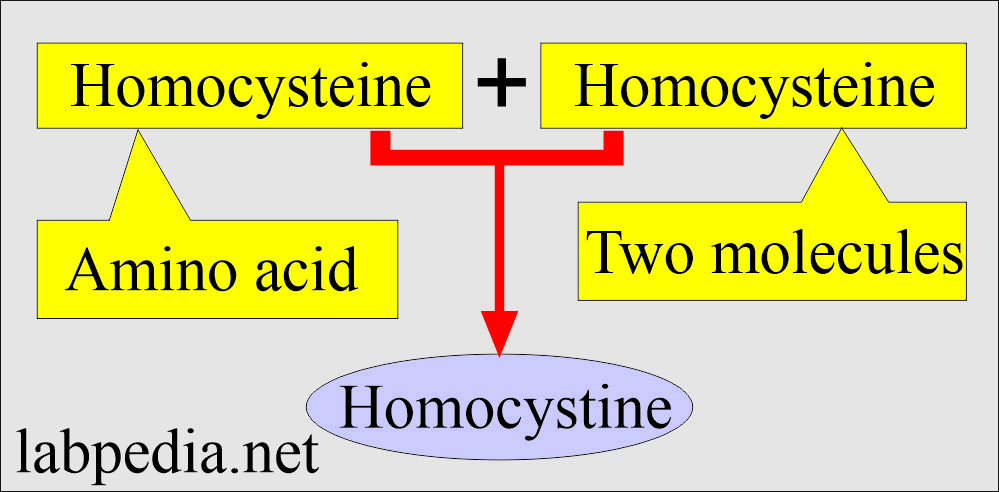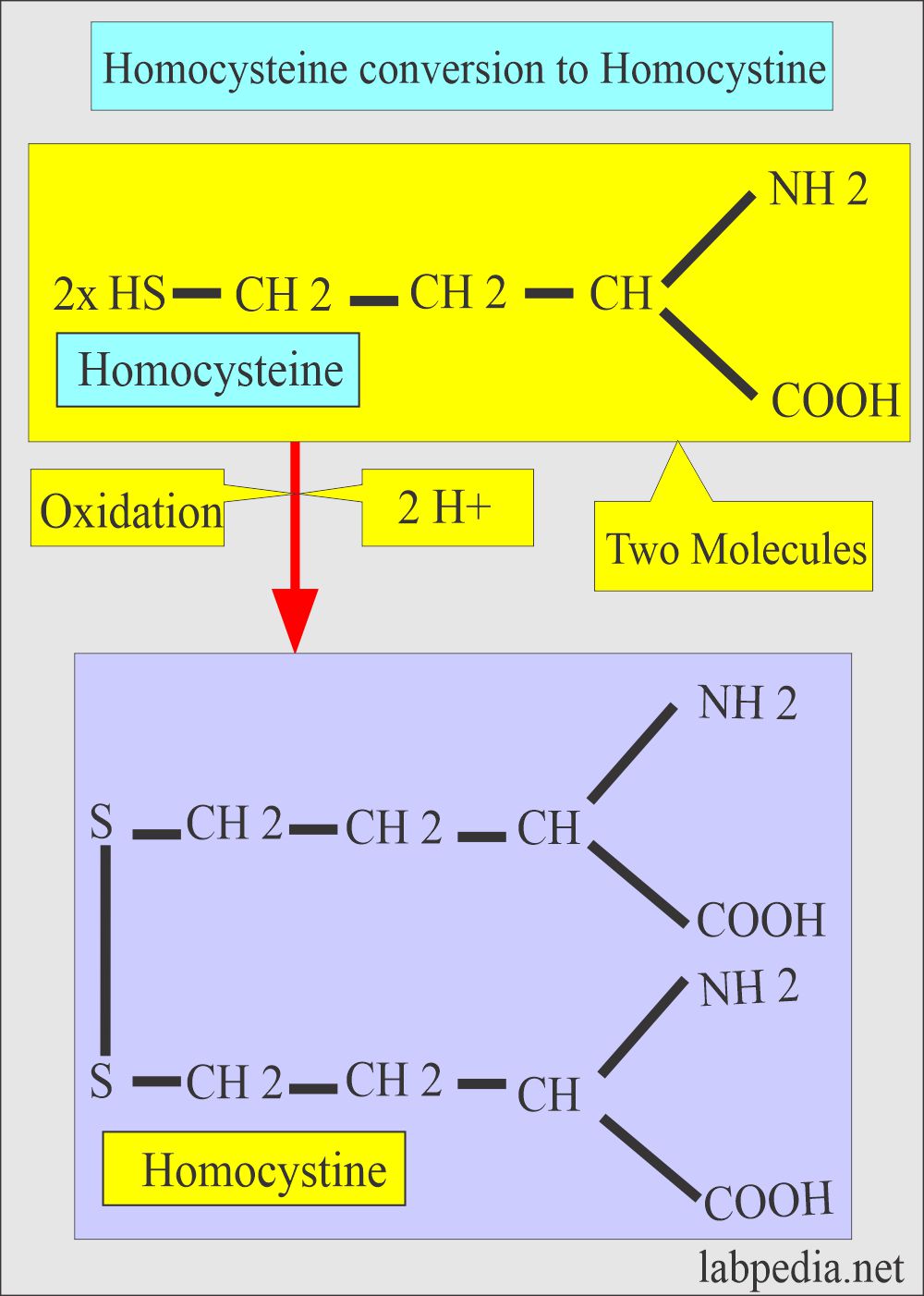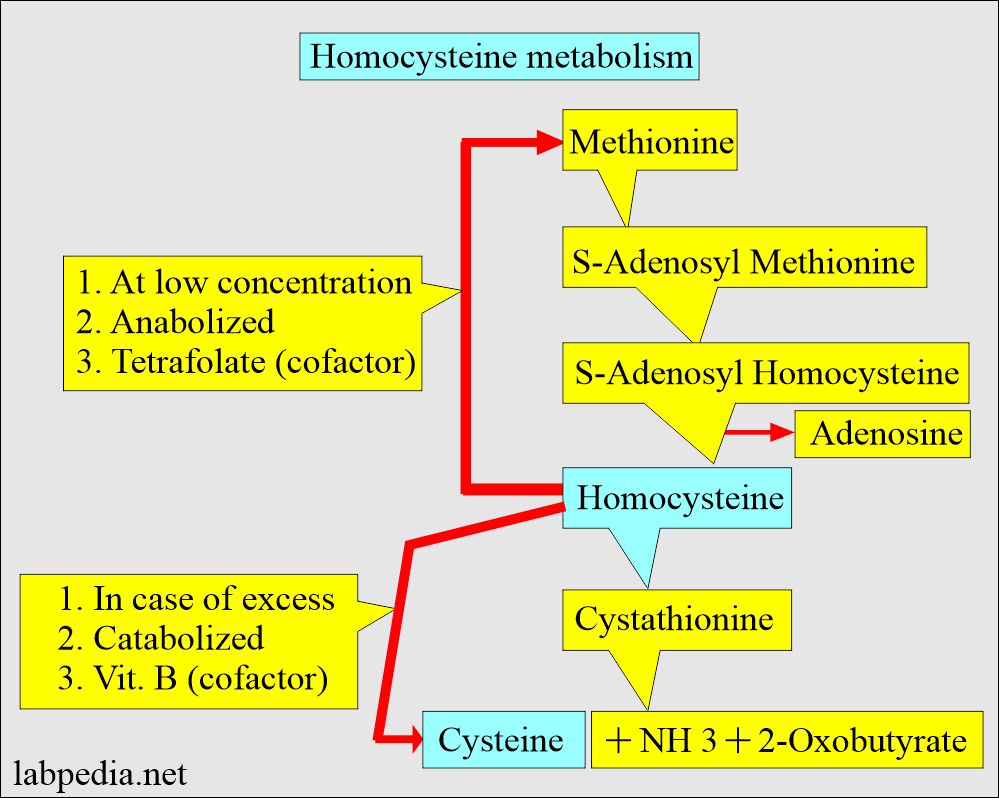Homocystinuria, Diagnosis and Treatment
What sample is needed for Homocystinuria?
- This test is done on the urine sample.
- Methionine can be estimated using serum as well.
What are the Indications for Homocystinuria?
- To diagnose the complications due to homocystinuria.
How will you define Homocystinuria?
- It is an autosomal recessive inherited disorder.
- It results from the enzyme cystathionine-beta-synthetase deficiency, which catalyzes cystathionine formation from homocystine and serine.
- It is characterized by increased plasma concentration of methionine, free homocysteine, and cysteine-homocysteine disulfide together with low cystine.
- Homocysteine is an amino acid, where homocystine is a dimer of two homocysteine molecules joined together.
How will you discuss the pathophysiology of Homocystinuria?
- In the USA, 1:150,000 cases may show homocystinuria.
- This is an autosomal recessive inherited disorder.
- Homocystinuria is inherited in families as an autosomal recessive trait. This means the child must inherit the non-working gene from both parents to be seriously affected.
- This is a disorder of methionine metabolism which leads to:
- Accumulation of homocysteine and its metabolites in the blood and urine.
- Normally, these are not found in the blood or urine.
- This may be seen in patients with cobalamin and folate deficiency.
- This group of disorders is characterized by excessive excretion of homocysteine in the urine.
- Basically, there is a deficiency of the cystathionine beta-synthase enzyme deficiency.
- This metabolic disorder results from a deficiency in the cystathionine beta-synthase enzyme, which is responsible for methionine and homocysteine metabolism.
- In this case, methionine is measured.
- Homocysteine normally does not accumulate in the plasma because it is unstable and, when present in excess, undergoes oxidation to homocystine.
- The concentration of homocystine in the urine is not detectable but decreased homocysteine conversion to cystathionine by cystathionine beta-synthase enzyme or back to methionine leads to homocystinuria.
- There is an excess of homocysteine and methionine in the blood.
- There is the presence of homocysteine and methionine in the urine.
What is the clinical presentation of Homocystinuria?
- Clinical presentation may be nonspecific, with failure to thrive and delayed development.
- Diagnosis is usually delayed up to 3 years of age if the newborn screening is not done.
- Untreated patients are associated with:
- Dislocated lenses, myopia, glaucoma, retinal detachment, and degeneration.
- Optic atrophy and cataracts may develop later on.
- Muscle weakness.
- Osteoporosis is quite common.
- Arterial and venous thrombosis.
- Delay in the development of infants.
- Hypercoagulability.
- Mental retardation is seen in >50% of the cases.
- These neurological symptoms include seizures, abnormal EEG, and psychiatric abnormalities.
- Thromboembolic attacks are common.
- A special dietary supplement may help to prevent this complication.
- Other symptoms seen are :
- Chest deformities (pectus carinatum, pectus excavatum)
- Flushing across the cheeks.
- High arches of the feet.
- Intellectual disability.
- Knock knees.
- Long limbs.
- Mental disorders.
- Nearsightedness.
- Spidery fingers (arachnodactyly).
- Tall, thin build.
How will you diagnose Homocystinuria?
- The amino acid screen of blood and urine.
- Methionine is tested in the urine.
- Genetic testing.
- Liver biopsy and enzyme assay.
- Skeletal x-ray.
- Skin biopsy with a fibroblast culture.
- Standard ophthalmic exam.
- A urine test on cyanide/nitroprusside shows a cherry red color.
What are the normal values of Homocystinuria?
- Random urine samples are negative.
- Methionine level = 1.0 to 2.0 mg/dL (67 to 134 µmol/L).
What are the differences between homocysteinemia and homocystinuria?
| Clinical parameters | Homocysteinemia | Homocystinuria |
|
|
|
|
|
|
|
|
|
How will you treat Homocystinuria?
- No specific treatment.
- Dietary restriction of the methionine.
- The patients are given high doses of Vit. B6.
- 50% may respond and will need it. B6 for the rest of the life.
- In unresponsive patients, given a low sulfur diet, especially low methionine.
- A low dose of folic acid and a cystine supplement may help.
- Betaine reduces the homocysteine concentration, promoting homocysteine conversion back to methionine.
- A low-protein diet is recommended.
- Life expectancy is reduced if not treated.
Questions and answers:
Question 1: What is the mechanism of homocystinuria?
Question 2: How will you treat homocystinuria?



